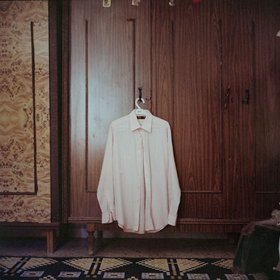Projects
17,000 Missing: A Nation in Denial
I was seven years old when my father was kidnapped in 1981; three days later he was set free.
Many years later, I understood he was luckier than the others. 17,000 people remain officially missing in Lebanon while their families still await their return.
They all disappeared during the Lebanese civil war in 1975-90; they were abducted or killed at the hands of different Lebanese militias, Syria, or Israel and their allies. The kidnapped were from diverse creeds, gender, ages and political persuasions.
Lebanon, a small country, whose population accounts for 4 million, is home to 18 official religious sects. After 15 years of civil war that ended with 144,000 dead and 184,000 wounded, an amnesty law in 1991 not only pardoned all those who took part in the war, but also relieved them from the obligation of testifying and sharing all the information they have, including any details on the fate of the missing.
A Commission of Inquiry - which was set up by the Lebanese Government in January 2000 as a result of pressure from the families of the 'disappeared' - did set about examining several mass graves but stated that they were unable to ascertain the identities of those who were buried. The report further stated that none of the 'disappeared' were alive in Lebanon. One of the starker conclusions of this report recommended that those missing for at least four years should be considered dead.
In May 2010, I visited 80-year-old Amneh Hassan Banat, better known for Umm Aziz (mother of Aziz) at her house and she recounted the kidnapping of her four children. On 17 September 1982, a truck full of militants captured Ahmed, Mansour, Ibrahim and Aziz Dirawi, four Palestinian brothers aged from 13 to 31. Umm Aziz followed the truck as her sons were being taken away. She never thought it would be the last time she would see them. Like many others, she has been struggling to find her missing loved ones. At her house, photographs of her missing boys are hanging everywhere. Her living room has been turned into a shrine: on her bed a framed picture of her children lies just next to her pillow, and in her closet she has preserved the few belongings - shirts, school bags, books, toothbrush and toothpaste, pack of cigarettes - that she has managed to maintain as relics of their one-time presence, hoping that one day they will return home to find their belongings preserved.
My project to date has focused on documenting the story of the 'missing' in all its aspects. I visited few families of the kidnapped, documented their lives and their ongoing struggle, took pictures of the preserved belongings of their missing. I also documented a few locations of mass graves that were stated in some reports or admitted by ex-militants who told their stories. Landscapes in the mountain, the capital, the cities and the surrounding villages - even the Mediterranean Sea was used as a silent mass grave. People keep saying, 'the whole Lebanese soil is planted with mass graves'.
My ambition is to raise awareness of the 'disappeared' and the conditions behind one of the gravest crimes in international law. I want to shed light on that which a whole generation has ignored and, in doing so, show the continuous, possibly irremediable, mourning of many families and the ongoing denial of many others.
Watch Dalia Khamissy's film Open Eye: Lebanon's missing (2011). Photography Dalia Khamissy, Production Benjamin Chesterton, A duckrabbit production for the BBC






